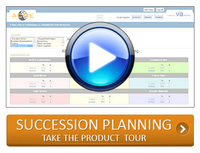Who Gets the Keys: Should HR or Executives Drive the Succession Planning Process?

My clients have different needs when it comes to succession planning and sometimes these needs impact who manages the succession planning process in their companies. For example, some organizations have specific expansion plans which dictate what type of process, skills sets and leadership will be part of the initiative. Other organizations have diversity initiatives that may require a different process and leaders. Still others have board mandates requiring executive succession plans which often demand a different level of participation from the executive team.
In most organizations, Human Resources “owns” the project in terms of managing the project team tasked with communicating, coordinating and ultimately implementing the succession planning process. Having the HR team run the succession planning process helps to ensure the following outcomes:
- Objectivity and process rigor in analyzing the potential successors who are nominated as part of the process
- Serving as a confidential sounding board for the executives when discussing candidates
- Creating opportunities for growth so that “high-potentials” have some type of development activity targeted to their individual needs
Ensuring Objectivity and Process Rigor
One of the most common fears we hear mentioned by our clients who are about to embark on a succession planning process is that the initiative won’t remain objective. If executives and other leaders are making judgments on high-potential candidates, without a clearly defined process and set of criteria to ensure objectivity, these judgments can very often become biased. HR leadership involvement helps to ensure that a consistent process, methodology and criteria are used when identifying these candidates.
More and more organizations are looking to technology solutions to ensure a standard methodology to assess internal candidates. Once you have over 30-40 leaders in the assessment pool, it quickly becomes unwieldy to capture the same type of comprehensive, objective information when running the succession planning process manually (or using Microsoft Excel or Access). Using a technology solution allows HR to apply a common process and criteria (e.g., what constitutes a high-, medium- or low potential candidate) across many individuals.
Serving as a Confidential Sounding Board
Once the candidates are assessed and a list of high-potentials has surfaced, the executive team discusses this group of candidates and attempts to identify the individuals who could assume new roles, serve as successors for soon-to-be vacant roles or potentially serve as mentors in an effort to groom other leaders in the organization. While technology solutions can protect against many biases in the assessment phase, often favoritism creeps into these discussions.
As a result, we strongly recommend that HR leaders are involved in these discussions so they can continue to keep the leadership team focused on the objective aspects of the discussion. This can be a tricky role for HR to play given there are strong relationships established in many leadership levels and this can alter the objectivity in the process. In addition, some of these executives may have authority over the HR person in the room and this can serve to complicate matters even more. In these cases it is critical that objective standards and criteria have been defined as part of the succession planning process so that HR can continually bring the group back to the agreed-upon methodology. This drastically reduces the biases in these discussions and helps to keep the group on track.
Creating Opportunities and Growth and Development
Another reason that HR often drives a succession planning process is so they can provide the targeted growth and development opportunities for these high-potential leaders. Given that HR is involved in the process from the very beginning, this team is able to help define what the assessment criteria will be and therefore know what type of development and growth opportunities should be available to best meet the needs to the leadership group. This knowledge offers the team several months to prepare and plan for the targeted development opportunities at the conclusion of the assessment.
Many HR teams get a bit nervous when they think about the development efforts needed for a group of leader post-assessment. When putting several hundred leaders through a process like this, the development and growth opportunities for this large of a group can seem impractical. What is important to keep in mind here is that not every leader will have the same development needs and not all will be on the same timeline. In other words, some leaders may need more time-intensive coaching whereas others may need to enroll in an external leadership development course, which is much less of a demand on the HR team. For more information on setting realistic development planning efforts post-succession planning, check out one of my previous articles: “Where to Draw the Line – Determining Who to Include in Your Succession Planning Process”.
HR leaders wear many hats within an organization today and having this team manage a a critical talent management initiative such as succession planning makes sense not only from a development standpoint but also to ensure objectivity and fairness. Once the HR project team is assembled it’s helpful to have 1-2 executive sponsors who will not only help in communicating the importance of the process but can ensure top-level involvement in the definition of the criteria and methodology around the process.
Learn more about how to get started, and take a quick product tour!
Succession Planning: Living the 9 Box Dream
Identifying Critical Positions in the Succession Planning Process

Share this
You May Also Like
These Related Stories

Where to Draw the Line: Determining Who to Include in Your Succession Planning Process

Is it a Secret? Communicating Hi-Po Status in Succession Planning.

